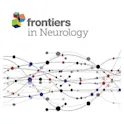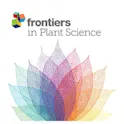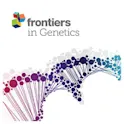Frontiers Communications
Editor
Editor

Frontiers news
10 Jan 2016
Selectively Disrupted Functional Connectivity Networks in Type 2 Diabetes Mellitus Yaojing Chen, Zhen Liu, Junying Zhang, Guihua Tian, Linzi Li, Sisi Zhang, Xin Li, Kewei Chen and Zhanjun Zhang* The Right Supramarginal Gyrus Is Important for Proprioception in Healthy and Stroke-Affected Participants: A Functional MRI Study Ettie Ben-Shabat*, Thomas A. Matyas, Gaby S. Pell, Amy Brodtmann and Leeanne M. Carey Discrimination between Alzheimer’s Disease and Late Onset Bipolar Disorder Using Multivariate Analysis Ariadna Besga*, Itxaso Gonzalez, Enrique Echeburua, Alexandre Savio, Borja Ayerdi, Darya Chyzhyk, Jose L. M. Madrigal, Juan C. Leza, Manuel Grana and Ana Maria Gonzalez-Pinto Amplitudes of Pain-Related Evoked Potentials Are Useful to Detect Small Fiber Involvement in Painful Mixed Fiber Neuropathies in Addition to Quantitative Sensory Testing – An Electrophysiological Study Niels Hansen, Ann-Kathrin Kahn, Daniel Zeller, Zaza Katsarava, Claudia Sommer and Nurcan Üçeyler* Age-Related Sexual Dimorphism in Temporal Discrimination and in Adult-Onset Dystonia Suggests GABAergic Mechanisms John S. Butler, Ines M. Beiser, Laura Williams, Eavan McGovern, Fiona Molloy, Tim Lynch, Daniel G. Healy, Helena Moore, Richard Walsh, Richard B. Reilly, Sean O’Riordan, Cathal Walsh and Michael Hutchinson* Quetiapine Inhibits Microglial Activation by Neutralizing Abnormal STIM1-Mediated Intercellular Calcium Homeostasis and Promotes Myelin Repair in a Cuprizone -Induced Mouse Model of Demyelination Hanzhi […]

Frontiers news
09 Jan 2016
Augmented IFN-γ and TNF-α Induced by Probiotic Bacteria in NK Cells Mediate Differentiation of Stem-Like Tumors Leading to Inhibition of Tumor Growth and Reduction in Inflammatory Cytokine Release; Regulation by IL-10 Vickie T. Bui, Han-Ching Tseng, Anna Kozlowska, Phyu Ou Maung, Kawaljit Kaur, Paytsar Topchyan and Anahid Jewett* Bad News: Analysis of the Quality of Information on Influenza Prevention Returned by Google in English and Italian Ali Maki, Roger Evans and Pietro Ghezzi* Genome-Wide Analysis Reveals Selective Modulation of microRNAs and mRNAs by Histone Deacetylase Inhibitor in B Cells Induced To Undergo Class Switch DNA Recombination and Plasma Cell Differentiation Tian Shen, Helia N. Sanchez, Hong Zan* and Paolo Casali* Acute Immune-Inflammatory Responses to a Single Bout of Aerobic Exercise in Smokers; The Effect of Smoking History and Status Tegan Emma Kastelein*, Rob Duffield and Frank E. Marino DNP-KLH Yields Changes in Leucocyte Populations Expansion and Immunoglobulin Isotype Use With Different Immunization Routes in Zebrafish Heather Weir, Patricia L. Chen, Thaddeus C. Deiss, Natalie Jacobs, Mary B. Nabity, Matthew Young and Michael F. Criscitiello* Intramuscular Priming and Intranasal Boosting Induce Strong Genital Immunity Through Secretory IgA in Minipigs Infected with Chlamydia trachomatis Emma Lorenzen*, Frank Follmann, Sarah Bøje, Karin Erneholm, Anja Weinreich Olsen, Jørgen Steen Agerholm, Gregers […]

Frontiers news
09 Jan 2016
Supplemental Upward Lighting From Underneath to Obtain Higher Marketable Lettuce (Lactuca sativa) Leaf Fresh Weight by Retarding Senescence of Outer Leaves Geng Zhang, Shanqi Shen, Michiko Takagaki, Toyoki Kozai and Wataru Yamori* De novo Transcriptome Assembly of a Chinese Locoweed (Oxytropis ochrocephala) Species Provides Insights Into Genes Associated with Drought, Salinity and Cold Tolerance Wei He, Huihui Zhuang, Yanping Fu, Linwei Guo, Bin Guo, Lizhu Guo, Xiuhong Zhang and Yahui Wei* Crucial Roles of Abscisic Acid Biogenesis in Virulence of Rice Blast Fungus Magnaporthe oryzae Carla A. Spence, Venkatachalam Lakshmanan, Nicole Donofrio and Harsh P. Bais* A Homoploid Hybrid Between Wild Vigna Species Found in a Limestone Karst Yu Takahashi, Kohtaro Iseki, Kumiko Kitazawa, Chiaki Muto, Prakit Somta, Kenji Irie, Ken Naito* and Norihiko Tomooka Polyamine and Its Metabolite H2O2 Play a Key Role in The Conversion of Embryogenic Callus into Somatic Embryos in Upland Cotton (Gossypium hirsutum L.) Wen-Han Cheng, Fan-Long Wang, Xin-Qi Cheng, Qian-Hao Zhu, Yu-Qiang Sun, Hua-Guo Zhu* and Jie Sun* Quantitative Trait Locus Analysis of Seed Germination and Seedling Vigour in Brassica rapa Reveals QTL Hotspots and Epistatic Interactions Ram K. Basnet*, Anita Duwal, Dev N. Tiwari, Dong Xiao, Sokrat Monakhos, Johan Bucher, Richard G. F. Visser, Steven P. C. Groot, Guusje Bonnema and Chris Maliepaard* Evaluation of […]

Frontiers news
08 Jan 2016
Transfection of microRNA Mimics Should Be Used with Caution Hyun Yong Jin, Alicia Gonzalez-Martin, Ana V. Miletic, Maoyi Lai, Sarah Knight, Mohsen Sabouri-Ghomi, Steven R. Head, Matthew S. Macauley, Robert C. Rickert and Changchun Xiao* Addressing Bias in Small RNA Library Preparation for Sequencing: A New Protocol Recovers microRNAs that Evade Capture by Current Methods Jeanette Baran-Gale*, C. Lisa Kurtz, Michael R. Erdos, Christina Sison, Alice Young, Emily E. Fannin, Peter S. Chines and Praveen Sethupathy* Overexpression of the Heterochromatinization Factor BAHD1 in HEK293 Cells Differentially Reshapes the DNA Methylome on Autosomes and X Chromosome. Emanuele Libertini, Alice Lebreton, Goran Lakisic, Marie-Agnès Dillies, Stephan Beck, Jean-Yves Coppée, Pascale Cossart and Hélène Bierne* Biased Allele Expression and Aggression in Hybrid Honeybees May Be Influenced by Inappropriate Nuclear-Cytoplasmic Signaling Joshua D. Gibson*, Miguel E. Arechavaleta-Velasco, Jennifer M. Tsuruda and Greg J. Hunt Extent of Linkage Disequilibrium and Effective Population Size in Four South African Sanga Cattle Breeds Sithembile O. Makina*, Jeremy F. Taylor, Este Van Marle-Koster, Farai C. Muchadeyi, Mahlako L. Makgahlela, Michael D. MacNeil and Azwihangwisi Maiwashe Differential Occurrence of Interactions and Interaction Domains in Proteins Containing Homopolymeric Amino Acid Repeats Ilaria Pelassa and Ferdinando Fiumara* Targeted Analysis Reveals an Important Role of JAK-STAT-SOCS Genes for Milk Production Traits in […]

Health
08 Jan 2016
Stroke is the leading cause of long-term disability among adults. Known within the research community as a “brain attack”, it is when cells in the brain die due to poor blood flow. For example, in the most common type of stroke, the blockage of a blood vessel starves an area of the brain from proper nutrition, oxygen, blood sugar and other main nutrients. The prevalence of stroke is just one of the reasons why Professor Jose Biller decided to focus his research on this condition. Chair of the Department of Neurology at Loyola University in Chicago, Biller’s main research interest is in the clinical trials relating to the treatment of stroke. Taking the clinical approach to stroke also has a personal incentive for Billler as members of his family have suffered from strokes. But it is the preventability and treatability of this condition that drives his interest in the field. “It is a very prevalent condition…” said Biller. “I think there is a need for further advances.” Stroke can affect everybody Most of us associate strokes with the elderly and yet Biller has a special interest researching strokes occurring in young adults. Biller explained that strokes can in fact occur […]

Frontiers news
07 Jan 2016
A Retina Inspired Model for Enhancing Visibility of Hazy Images Xian-Shi Zhang, Shao-Bing Gao, Chao-Yi Li and Yong-Jie Li* Learning, Memory, and Executive Function in New MDMA Users: A Two-Year Follow-up Study Daniel Wagner, Simon Tkotz, Philip Koester, Benjamin Becker, Euphrosyne Gouzoulis-Mayfrank and Joerg Daumann* Corticomotor Excitability is Increased Following an Acute Bout of Blood Flow Restriction Resistance Exercise Christopher Roy Brandner, Stuart Warmington* and Dawson John Kidgell Modulation of Neural Activity in the Temporoparietal Junction with Transcranial Direct Current Stimulation Changes the Role of Beliefs in Moral Judgment Hang Ye, Shu Chen, Daqiang Huang, Haoli Zheng, Yongmin Jia and Jun Luo* No Significant Effect of Prefrontal tDCS on Working Memory Performance in Older Adults Jonna Nilsson*, Alexander V. Lebedev and Martin Lövdén Pleasant and Unpleasant Odors Influence Hedonic Evaluations of Human Faces: An Event-Related Potential Study. Stephanie Cook*, Nicholas Fallon, Hazel Wright, Anna Thomas, Timo Giesbrecht, Matt Field and Andrej Stancak Mirror Neurons in a New World Monkey, Common Marmoset Wataru Suzuki*, Taku Banno, Naohisa Miyakawa, Hiroshi Abe, Naokazu Goda and Noritaka Ichinohe* Reduced Responses of Submucous Neurons from Irritable Bowel Syndrome Patients to a Cocktail Containing Histamine, Serotonin, TNFα and Tryptase (IBS-Cocktail) Daniela Ostertag, Sabine Buhner, Klaus Michel, Christian Pehl, Manfred Kurjak, Manuela Götzberger, Ewert Schulte-Frohlinde, […]

Frontiers news
07 Jan 2016
Sprint Acceleration Mechanics: The Major Role of Hamstrings in Horizontal Force Production Jean-Benoit Morin*, Philippe Gimenez, Pascal Edouard, Pierrick Arnal, Pedro Jimenez-Reyes, Pierre Samozino, Matt Brughelli and Jurdan Mendiguchia Mitochondrial Bioenergetics and Fibre Type Assessments in Microbiopsy vs. Bergstrom Percutaneous Sampling of Human Skeletal Muscle Meghan C. Hughes, Sofhia V. Ramos, Patrick C. Turnbull, Ali Nejatbakhsh, Brittany L. Baechler, Houman Tahmasebi, Robert Laham, Brendon J. Gurd, Joe Quadrilatero, Daniel A. Kane and Christopher G.R. Perry* Low Intensity Exercise Training Improves Skeletal Muscle Regeneration Potential Tiziana Pietrangelo, Ester S. Di Filippo, Rosa Mancinelli*, Christian Doria, Alessio Rotini, Giorgio Fanò-Illic and Stefania Fulle Simulation of Cl- Secretion in Epithelial Tissues: New Methodology Estimating Activity of Electro-Neutral Cl- Transporter Kouhei Sasamoto, Naomi Niisato, Akiyuki Taruno and Yoshinori Marunaka* Immediate Effects of Smoking on Cardiorespiratory Responses During Dynamic Exercise: Arm Versus Leg Ergometry Chien-Liang Chen*, Jing-Shia Tang, Nan-Ying Yu, Ping-Chia Li and Pi-Ling Chou An Ultra-High field Magnetic Resonance Spectroscopy Study of Post Exercise Brain Lactate, Glutamate and Glutamine Change in the Human Brain. Andrea Dennis*, Adam G. Thomas, Nancy B. Rawlings, Jamie Near, Thomas E. Nichols, Stuart Clare, Heidi Johansen-Berg and Charlotte J. Stagg Individualized Internal and External Training Load Relationships in Elite Wheelchair Rugby Players Thomas A. W. […]

Frontiers news
06 Jan 2016
Bacterial Exchange in Household Washing Machines Chris Callewaert, Sam Van Nevel, Frederiek-Maarten Kerckhof, Michael S. Granitsiotis and Nico Boon* Occurrence and Antibiotic Resistance of Vibrio parahaemolyticus from Shellfish in Selangor, Malaysia Vengadesh Letchumanan, Priyia Pusparajah, Loh Teng-Hern Tan, Wai-Fong Yin, Learn-Han Lee* and Kok-Gan Chan Evaluation of Antioxidative and Cytotoxic Activities of Streptomyces pluripotens MUSC 137 Isolated from Mangrove Soil in Malaysia Hooi-Leng Ser, Nurul-Syakima Ab Mutalib, Wai-Fong Yin, Kok-Gan Chan, Bey-Hing Goh* and Learn-Han Lee* Comparative Gut Microbiota of 59 Neotropical Bird Species Sarah M. Hird*, Cesar Sanchez, Bryan C. Carstens and Robb T. Brumfield Year-Long Metagenomic Study of River Microbiomes Across Land Use and Water Quality Thea Van Rossum, Michael A. Peabody, Miguel I. Uyaguari-Diaz, Kirby I. Cronin, Michael Chan, Jared R. Slobodan, Matthew J. Nesbitt, Curtis A. Suttle, William W. L. Hsiao, Patrick K. C. Tang, Natalie A. Prystajecky and Fiona S. L. Brinkman* Chlamydia Infection Across Host Species Boundaries Promotes Distinct Sets of Transcribed Anti-Apoptotic Factors. Joshua E. Messinger, Emmalin Nelton, Colleen Feeney and David C. Gondek* A Metagenomics-Based Metabolic Model of Nitrate-Dependent Anaerobic Oxidation of Methane by Methanoperedens-Like Archaea Arslan Arshad, Daan R. Speth, Rob M. de Graaf, Huub J. M. Op den Camp, Mike S. M. Jetten and Cornelia U. Welte* Natural Sunlight Shapes […]

Open science and peer review
24 Dec 2015
The total number of peer-reviewed research articles published each year increases by approximately 4% [Scopus]. In 2014, nearly 400,000 published research articles were Gold open-access papers. This results in approximately 20% of all research articles — and the number is growing at an astonishing rate of 20% per year (Lewis, 2013). If the rate continues, open-access papers will exceed subscription papers in just a few years from now. This, and similar observations, have led some commentators to predict that traditional subscription journals will soon be a thing of the past (Lewis, 2012). But is this a credible prediction? Is open access capable of disrupting the entire scholarly publishing industry? Can it replace traditional publishing or force it to adopt new business models? The answers depend on whether open access satisfies two fundamental criteria for disruption: an increase in efficiency and a decrease in costs. The new generation of open-access publishers are “born digital” which is undoubtedly far more efficient, but how much will universities, institutes and scientists save by switching to open access ? Brief history of the evolution of open access From the 1950s to the 1990s, nearly all scientific papers were published in subscription journals that were paid for by individual readers or […]

Frontiers news
23 Dec 2015
Kyle Gustafson and Kyle Douglass are two physicists doing their postdocs at EPFL…in Biology. Douglass did his PhD in Optics at the University of Central Florida, Orlando, working in the fields of light scattering, biophotonics, and optical sensing for soft matter characterization and cell biology. Now he is doing his first postdoc in the Laboratory of Experimental Biophysics at EPFL, where he is using new microscopy techniques, building his own super-resolution fluorescence microscope, to understand the structure of DNA inside the cell nucleus. He is using his background in experimental physics and working closely with biologists, to perform his research focused on the physical mechanisms describing the compaction of chromatin, the associated DNA proteins. Gustafson did his PhD in theoretical plasma physics at the University of Maryland. He did a first postdoc in plasma Physics at EPFL before switching into biological physics and systems biology. In his last postdoctoral period at EPFL, he studied new models for the description of stochastic phenomena in gene regulation networks. He is now moving to the Institute for Disease Modeling near Seattle, to continue with his research, now focused on epidemiology and spread of diseases. Both are working on Biophysics, but while Gustafson followed […]

Open science and peer review
22 Dec 2015
By Pascal Rocha da Silva, Frontiers The digital disruption for analog film started in 1975 with the invention of the digital camera by Steven Sasson and ended with the bankruptcy of Kodak in 2012 (40 years later). The digital disruption in publishing started in the late 1990s with the first online archiving of articles, but it is still far from complete (~30 years into the transition). However, as over 30% of peer-reviewed papers are now published in some form of open-access1, the industry has technically crossed the tipping point for disruption. This is the point where more than just the innovators and early adopters begin using a product or service. Figure 1: Projection of open access versus subscription articles: 2000-2021. Disruptions are driven by economic models that lower costs, and process models that increase efficiency. In 2014, the revenue per subscription article was around $7,000 (calculated from $14 billion revenue for about 2 million articles2 – see article on the cost of publishing), while the average Article Processing Charge (APC) for an open-access article was estimated in our sample at $2,700. This means that, as open-access articles grow to dominate the market, the cost of publishing will eventually drop 2-3 fold, saving libraries and research departments $5 to 10 […]

Frontiers news
22 Dec 2015
Frontiers published over 12,500 articles in 2015. Which ones were the most viewed and downloaded within the first month after publication?

Open science and peer review
21 Dec 2015
One of the strongest beliefs in scholarly publishing is that journals seeking a high impact factor (IF) should be highly selective, accepting only papers predicted to become highly significant and novel, and hence likely to attract a large number of citations. The result is that so-called top journals reject as many of 90-95% of the manuscripts they receive, forcing the authors of these papers to resubmit in more “specialized”, lower impact factor journals where they may find a more receptive home. Unfortunately, most of the 20,000 or so journals in the scholarly publishing world follow their example. All of which raises the question: does the strategy work? There is evidence that proves it doesn’t. In Figure 1, we plotted the impact factors of 570 randomly selected journals indexed in the 2014 Journal Citation Reports (Thomson Reuters, 2015), against their publicly stated rejection rates. Figure 1: 570 journals with publicly stated rejection rates (for sources, see below and to see complete data, click here). Impact factors from Thomson Reuters Journal Citation Reports (2014). (Y-axis is on a Log scale). As you can see, Figure 1 shows there is absolutely no correlation between rejection rates and impact factor (r2 = 0.0023; we assume the sample of 570 journals is sufficiently random to represent the […]

Life sciences
15 Dec 2015
An interview with Michele Samaja, Associate Professor in Biochemistry at the University of Milan and Guest Associate Editor for Frontiers in Pediatrics. Before falling in love with Biochemistry, Professor Michele Samaja was about to leave the university after only one year. “After the classical courses in Chemistry, Physics, Organic Chemistry, Microbiology etc., I was rather discouraged by the tedious and repetitive teachings and textbooks,” he said, “I even started practicing as a TV-cameraman and as a downhill ski instructor.” Then, he finally incurred the right course. Needless to say, it was a course of Biochemistry. “Eventually I became increasingly stimulated in getting more and more insight in what appeared to me a young discipline with high impact in every biomedical branch.” Today Michele Samaja is an Associate Professor in Biochemistry at the University of Milan, and this discipline led him to interact with different kinds of scientists (from physiologists to hematologists, pathologists, pharmacologists and immunologists), with lots of young PhD students and even with Sherpas from Nepal. What’s the main focus of your current research? The “genetic” imprinting that is leading my past and current research was given by a unique opportunity I had just after graduating, when I […]

Neuroscience
14 Dec 2015
Frontiers Science Hero: Egidio D’Angelo from Frontiers on Vimeo. For Prof. Egidio D’Angelo the brain provides many challenges that are waiting to be resolved, but for him it is like going on an adventure. “In many parts of the brain, you follow a track that moves from cellular and molecular properties up to microcircuit and into the complexity of brain connectivity. Investigating the brain is an adventure that, for a scientist, means connecting the lower level to the higher level of brain functioning. This is one of the most rewarding and interesting aspects of my work,” he said. D’Angelo has been a Professor of Physiology at the University of Pavia in Italy since 2006. He is teaching Physiology, Neurobiology and Neuroscience. D’Angelo is also the Specialty Field Chief Editor of Frontiers in Cellular Neuroscience, a multidisciplinary open-access journal devoted to better understanding the cellular mechanisms underlying the functions of the cells composing the nervous system across all species. D’Angelo and his team started by investigating the synaptic properties of the mossy fiber – granule cell synapse of cerebellum, with particular regard to the functional role of NMDA receptors. One of his research highlights includes the investigation of the cellular physiology […]
Get the latest research updates, subscribe to our newsletter